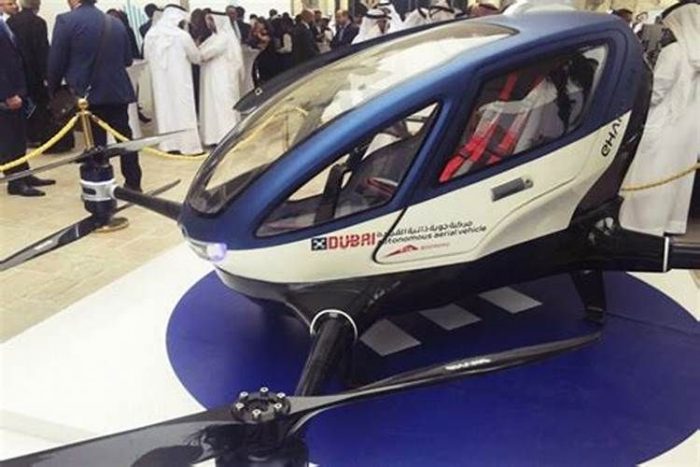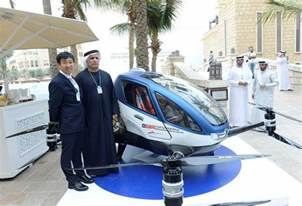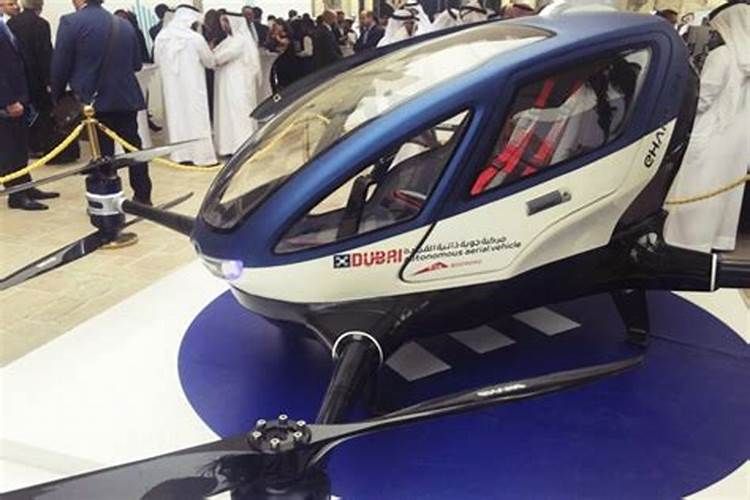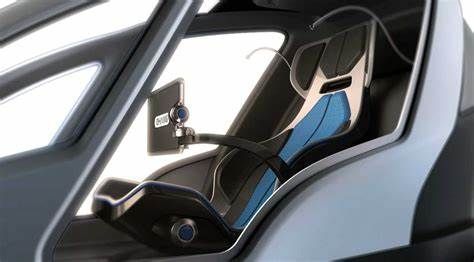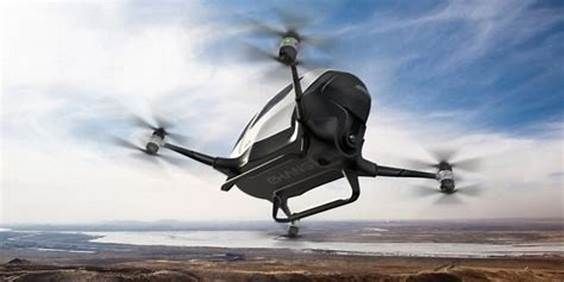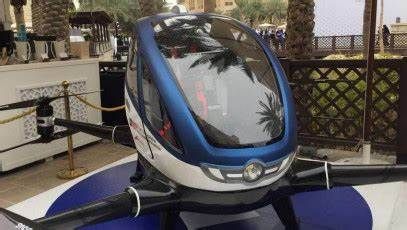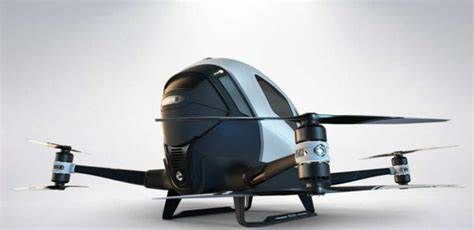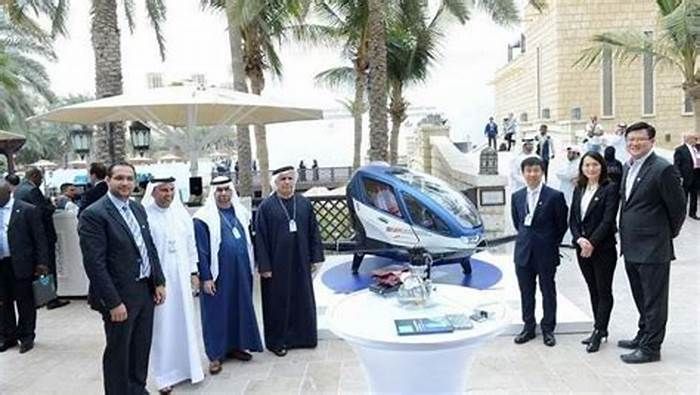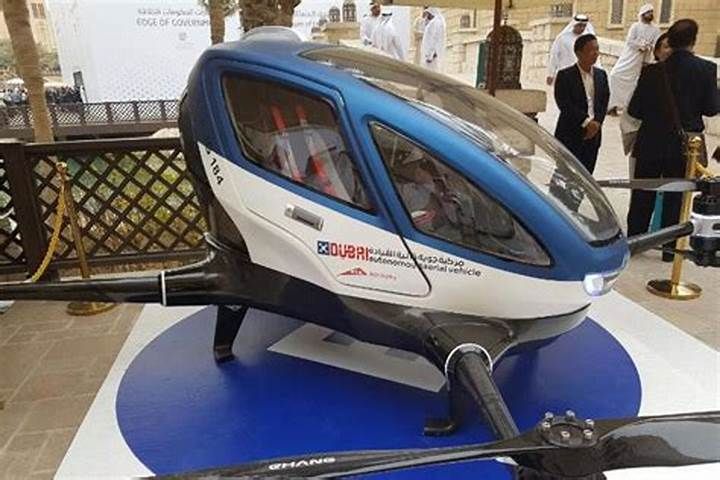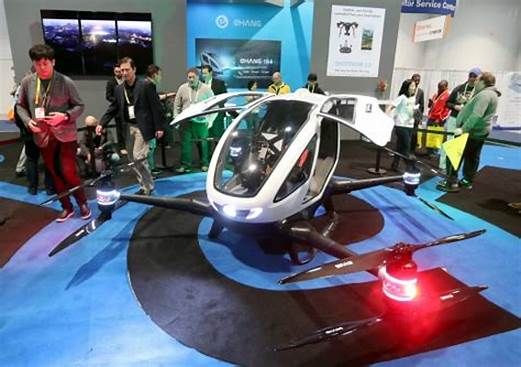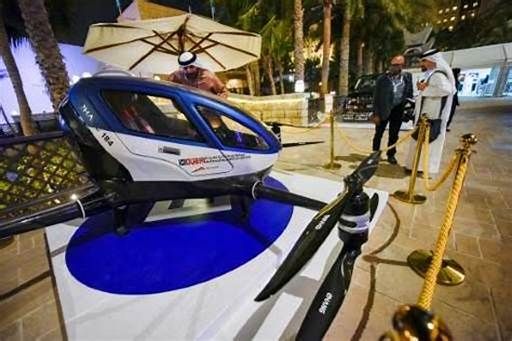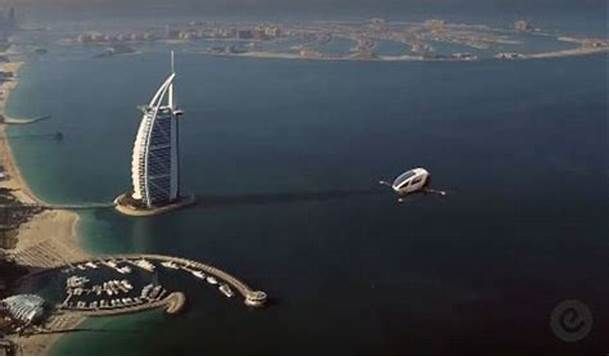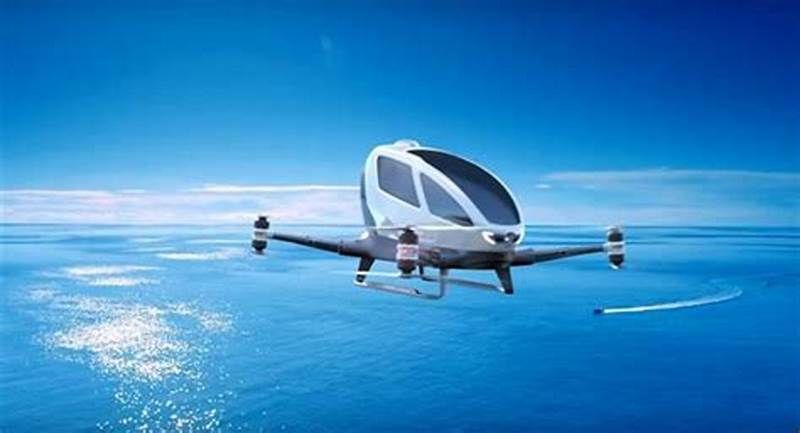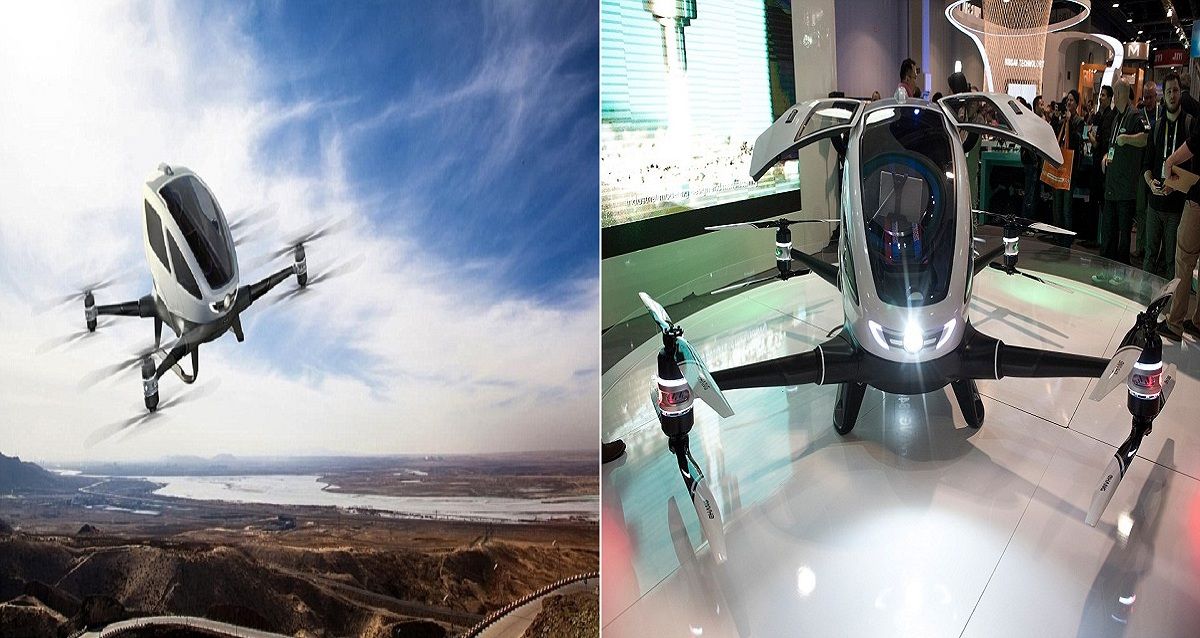Dubai’s Roads and Transport Authority (RTA), in collaboration with the Chinese EHANG Company, announced at World Government Summit on Monday that it had successfully carried oout the first test run of an Autonomous Aerial Vehicle (AAV) capable of carrying a human up in the air and this ‘flying car’ will begin operations in July this year. “The future is now in the making. Our talk about autonomous vehicles has become a reality. ?It is now high time to move to autonomous aerial vehicles,” declared Mattar Al Tayer, RTA director general and chairman of the board of executive directors, on the second day of the Summit. He added that the AAV, branded as EHANG184 manufactured by Chinese company EHANG, is in line with Dubai’s Self-driving Transport Strategy “aimed at transforming 25 per cent of total individual trips in Dubai into self-driving trips using various modes of transport by 2030.” The AAV is fitted with a touchscreen to the front of the passenger seat displaying a map of all destinations in the form of dots. It has preset routes and the rider is to select the intended destination.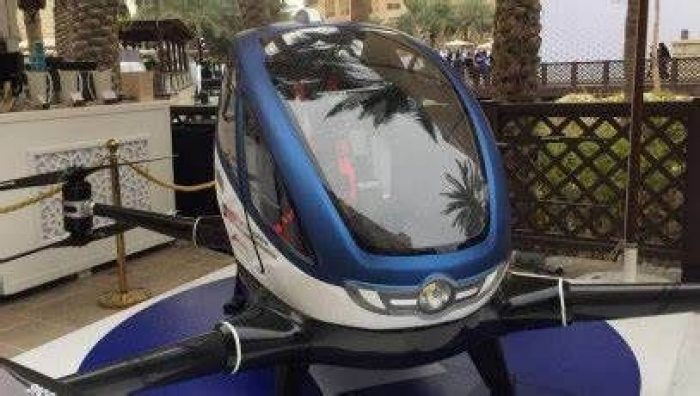
 The AAV is fitted with numerous basic systems all in operation at the same time, though independently. In case of any malfunctioning in one of these systems, the standby system would be capable of controlling and safely steering the AAV to the programmed landing point,” he added. The AAV is designed to fly for maximum 30 minutes at a maximum cruising speed of 160 km/h, and the standard speed shall be 100 km/h. The ascending/descending speed is about 6 meters per second and the landing speed is 4m/s.
The AAV is fitted with numerous basic systems all in operation at the same time, though independently. In case of any malfunctioning in one of these systems, the standby system would be capable of controlling and safely steering the AAV to the programmed landing point,” he added. The AAV is designed to fly for maximum 30 minutes at a maximum cruising speed of 160 km/h, and the standard speed shall be 100 km/h. The ascending/descending speed is about 6 meters per second and the landing speed is 4m/s.
 The actual ‘flying car’ measuring 3.9 m in length, 4.02 m in width, and 1.60 m in height was put on display at the three-day WGS. A video of EHANG184 flying over Burj Al Arab was shown at the conference. The maximum cruising height is 3000 feet and the battery charging time is 1-2 hours. The AAV is designed to operate under all climatic conditions unless there is a thunderstorm. The vehicle is fitted with highly accurate sensors with a very low-error threshold and can resist vibrations and extreme temperatures. “Dubai Civil Aviation Authority was a partner in our trials defining the safety criteria required, issuing the permits for trial and inspecting the vehicle, RTA appreciates their contribution. Etisalat had contributed as well to the success of the test run of the AAV in its capacity as a prime network provider. The 4G data network is used in communication between the AAV and the ground control center. The Company had also provided the support needed to ensure the continued communication between the AAV and the Control Center through M2M and LTE technologies,” explained Al Tayer. He noted that the successful operation of AAV is considered a big step towards innovative and smart mobility solutions for reducing city traffic congestions.
The actual ‘flying car’ measuring 3.9 m in length, 4.02 m in width, and 1.60 m in height was put on display at the three-day WGS. A video of EHANG184 flying over Burj Al Arab was shown at the conference. The maximum cruising height is 3000 feet and the battery charging time is 1-2 hours. The AAV is designed to operate under all climatic conditions unless there is a thunderstorm. The vehicle is fitted with highly accurate sensors with a very low-error threshold and can resist vibrations and extreme temperatures. “Dubai Civil Aviation Authority was a partner in our trials defining the safety criteria required, issuing the permits for trial and inspecting the vehicle, RTA appreciates their contribution. Etisalat had contributed as well to the success of the test run of the AAV in its capacity as a prime network provider. The 4G data network is used in communication between the AAV and the ground control center. The Company had also provided the support needed to ensure the continued communication between the AAV and the Control Center through M2M and LTE technologies,” explained Al Tayer. He noted that the successful operation of AAV is considered a big step towards innovative and smart mobility solutions for reducing city traffic congestions.